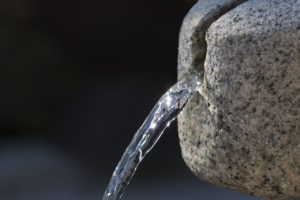Water is crucial to our survival and well-being. But for it to be fit for consumption, it must be drinkable. What makes water drinkable? What are the sources of this precious liquid? What determines the quality of drinking water? In this article, we explore the production, distribution and monitoring of drinking water in France. Drinking water is defined as water that is safe for human health. To achieve this, precise health standards have been established at European and national level. Drinking water can be consumed either in the form of bottled water (mineral or spring water) or directly from a tap that has undergone upstream treatment.
What makes water drinkable?
To be considered drinkable, water must meet strict quality standards set out in the French Public Health Code. These cover five main categories of criteria:
- Physico-chemical parameters: the temperature, pH and hardness of the water, as well as the concentration of ions, chlorides and sulphates.
- Organoleptic parameters: ensure pleasant consumption, with no unpleasant colour, odour or taste.
- Microbiological parameters: guarantee the absence of bacteria, viruses and parasites.
- Parameters linked to undesirable substances: limit the presence of compounds that can affect health or the environment (nitrates, nitrites and pesticides).
- Toxic micropollutant parameters: monitor levels of highly toxic substances such as arsenic, cyanide, chromium and nickel.
Water must undergo potabilisation treatments to meet these standards, the stages of which vary depending on the quality of the raw water and its source. These potabilisation stages include :
- Pre-treatment removes the largest impurities (leaves, branches and sand).
- Clarification aims to clear the water by removing suspended matter such as clay, limestone and mud.
- Filtration removes fine particles and micro-organisms using granular filters such as sand or activated carbon.
- Refining involves specific treatments adapted to the pollutants present, such as oxidation, adsorption, ion exchange or reverse osmosis.
- Disinfection, the aim of which is to eliminate any residual pathogens by adding disinfectants such as chlorine, ozone or UV rays.
Following these treatment stages, the water is stored in reservoirs or water towers, before being fed into the drinking water supply networks. The water distributed to consumers’ taps is regularly tested to ensure that it complies with drinking water standards.
 The different sources of drinking water
The different sources of drinking water
Drinking water can be drawn from a variety of sources, depending on resources and community needs. Drinking water is divided into two main types: surface water and groundwater.
Surface water is water that flows in the open air, such as rivers, lakes or natural reservoirs. These sources account for almost 70% of the drinking water supplied in France. Because it is exposed to agricultural, industrial and urban pollutants, surface water requires advanced purification processes before it can be made drinkable. Groundwater is found in the deep strata of the earth, including water tables and aquifers, and accounts for almost 30% of drinking water in France. Although groundwater is often safer from direct pollution, it is not immune to natural contamination (such as arsenic or radon) or contamination caused by human activity (such as nitrates or pesticides), and therefore also requires treatment. Other, less common or more expensive sources of drinking water include rainwater, atmospheric humidity, icebergs and seawater. All these sources can be exploited, but require a certain amount of treatment and the implementation of precise, detailed processes.
Water remains an essential resource for our lives, and we owe it to ourselves not only to preserve it, but also to optimise its distribution and use but also to optimise its distribution and consumption.
